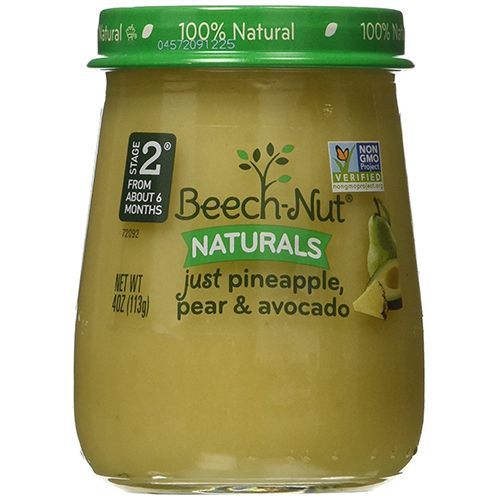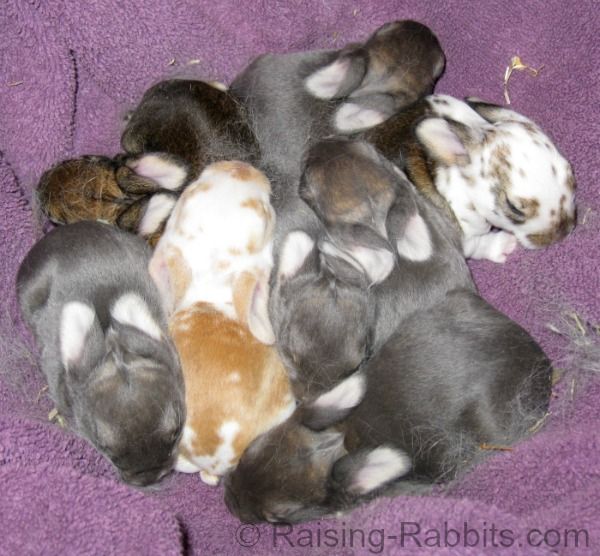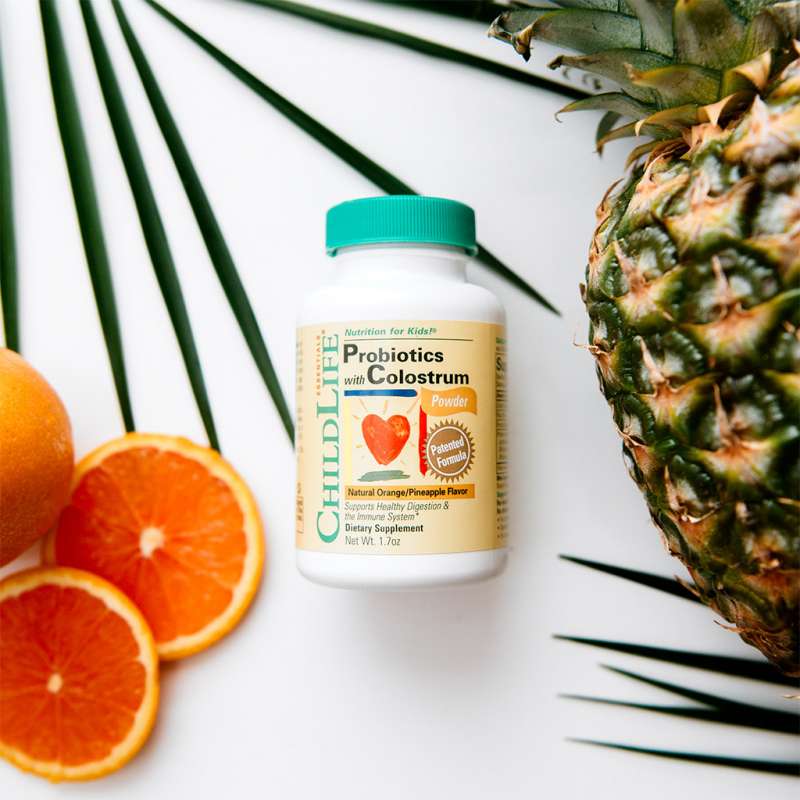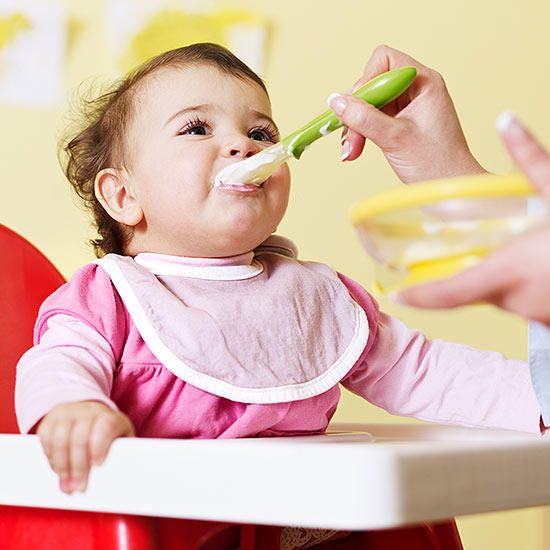Baby milk feeding steel bottle
Stainless Steel Baby Bottles: Safer than Plastic?
With all the concerns about leaching dangerous chemicals into breast milk and formula, parents are increasingly steering away from plastic baby bottles in favor of safer options, such as glass baby bottles or stainless steel.
At first, parents were shifting toward plastic baby bottles advertised as BPA-free, Phthalate-free, and Bisphenol-A-free. However, recent research shows that even BPA-free plastic baby bottles can leach chemicals into food and beverages.
Specifically, BPA-free baby bottles are commonly made with plastics using BPS, BPF, BPAF, BPZ, BPP, and/or BHPF. Notice how they all have "BP" in their names? That's bisphenol, and leading scientists say that BPA-free plastics are just like BPA in that they leach chemicals that cause genetic and hormonal disruption.
For quick guidance on which baby bottles might suit your needs, check out our annual round-up of the best baby bottles!
They look a lot like BPA [...] and they are going to behave like BPA. - Dr. Hunt, Geneticist at Washington State University
Does Stainless Steel Leach Chemicals?
So what about stainless steel baby bottles? Are they a safe alternative? Well, there are several advantages of stainless steel baby bottles. They don't contain any of the bisphenols found in plastic baby bottles, there is no risk of them shattering on impact, they are lighter weight than glass baby bottles, they last for a really long time, and most do not contain any inner liner that can leach chemicals into your food. There are some basic cons of stainless steel bottles, including that they can dent easily, cannot be microwaved, are not see-through for measurement purposes, and some people do not like the taste of beverages from a stainless steel bottle.
Also, it's important to point out that stainless steel has very high thermal conductivity, which means that it is not a good insulator. Cold or warm drinks will quickly adopt the temperature of the surrounding air, faster than in a plastic or glass baby bottle. They also will condensate more than other bottles if the contents are cold. Some stainless baby bottles solve this issue by including a silicone sleeve on the outside, which does help quite a bit.
They also will condensate more than other bottles if the contents are cold. Some stainless baby bottles solve this issue by including a silicone sleeve on the outside, which does help quite a bit.
But what about the stainless steel itself? The problem with stainless steel is the potential for it to leach heavy metals into breast milk or formula. In fact, recent research has shown that stainless steel utensils used for cooking, stainless steel cookware (pots, pans), and other stainless steel products can leach Nickel and Chromium (see the research papers here, here, and here).
Nickel and chromium are both heavy metals with mixed toxicity profiles. While they are both present in nature and dietary supplements, and at certain levels they are harmless, at higher exposure levels they can be harmful. For example, high exposure levels to nickel is associated with increased rates of cancer and dermatological illnesses (like contact dermatitis, eczema, rash, etc).
But it is important to point out that the extent to which these heavy metals leach into foods and beverages is related to the environmental conditions: it is especially problematic when the stainless steel is relatively new, it is heated for extended periods of time, or the food or drink is relatively acidic. This is not to say that nickel and chromium do not leach into non-acidic contents (they do), or that it only happens when heated, but it's just worse under those conditions.
This is not to say that nickel and chromium do not leach into non-acidic contents (they do), or that it only happens when heated, but it's just worse under those conditions.
What Types of Stainless Steel Leach Chemicals?
A more recent study examined various types of stainless steel, which is most commonly types 304 and 316 used in consumer products such as water bottles, baby bottles, cookware, and utensils. Generally speaking, 304 contains slightly less nickel and chromium than type 316. The intent of the study was to examine which type tends to leach the most nickel and chromium into food and drinks.
As it turns out, both 304 and 316 stainless steel showed similar leaching of nickel and chromium, which is unfortunate because many of the stainless steel baby bottles are made with stainless 304 due to its generally lower nickel and cadmium content. Studies here and here.
Glass or Stainless Steel Baby Bottles?
Modern parents are faced with the decision to invest in glass or stainless steel baby bottles. With glass, there is no risk of leaching chemicals into food or drinks; you can see our list of best glass baby bottles here. But there is the risk of the bottles breaking and shattering whether they are used with or without a silicone grippy liner. In fact, some daycares will not allow you to send glass baby bottles in with your baby due to the risk of dangerous breakage. In our experience, with a good quality silicone protective sleeve there is very low risk of shattering a glass baby bottle; in fact, we have found some brittle plastic baby bottles to be much more fragile than the thick glass baby bottles made by Joovy, Avent, and others.
With glass, there is no risk of leaching chemicals into food or drinks; you can see our list of best glass baby bottles here. But there is the risk of the bottles breaking and shattering whether they are used with or without a silicone grippy liner. In fact, some daycares will not allow you to send glass baby bottles in with your baby due to the risk of dangerous breakage. In our experience, with a good quality silicone protective sleeve there is very low risk of shattering a glass baby bottle; in fact, we have found some brittle plastic baby bottles to be much more fragile than the thick glass baby bottles made by Joovy, Avent, and others.
After reading the scientific literature and comparing the pros and cons of different baby bottle types, here is our advice. If you can go with a glass baby bottle with a silicone protective sleeve, and you can use that everywhere you need to without any issues (like at daycare or nursery school), then we say definitely go with a glass baby bottle.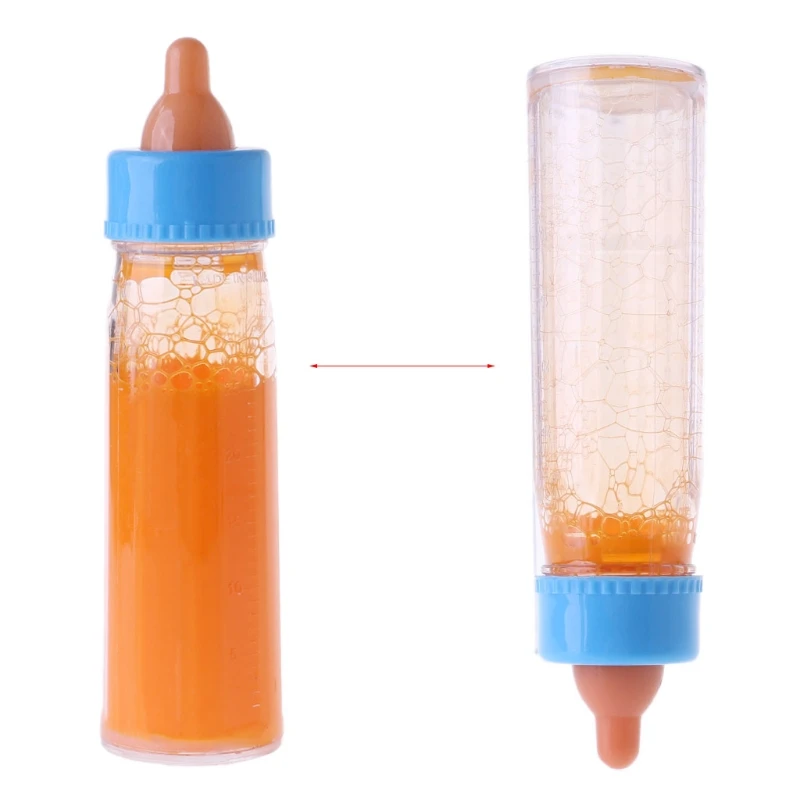
Have you seen the new Chicco Duo bottle, which combines a glass-lined inside with a durable plastic outside!? If not, be sure to check out our new Chicco Duo review!
But if you're not comfortable with glass due to fear of breakage, or glass bottles are not allowed in your daycare or nursery school, then go with a stainless steel baby bottle. But before you use the stainless steel baby bottle, we strongly recommend boiling it in white vinegar for several hours. This is a good way to help use the acidity of vinegar to cause surface nickel and chromium to leach out of the bottle before you use it with breast milk or formula.
Our advice: Boil the stainless steel bottle in vinegar multiple times before using it.
Recent research suggests that heating the bottle in an acidic solution (like vinegar) multiple times for several hours will diminish leaching to the point where nickel and chromium content is no greater than it is naturally occurring in something like tomato sauce (research is here).
Of course, we realize this will be a smelly process, and a bit of a pain in the butt to be honest. But if you want the best of both worlds, being shatter-proof and not leaching chemicals, then this seems like a necessary step.
Results of our Stainless Steel Baby Bottle Testing
We found several great stainless steel baby bottles for our hands-on tests. There are over a dozen options currently on the market, and we got our hands on them and tried them out. We heated them, cooled them, shook them upside-down, dishwashed them, put them in our bottle sterilizer, dropped them, and used them to feed two babies (one 3 months, one 11 months). Below we list the best stainless baby bottles we found, and then provide some more detailed reviews of each option. As always, if you have any questions or comments, send us a message via our Facebook page! And be sure to check out our full baby bottle buying guide and annual reviews to find the best baby bottles.
| Model and Link to Amazon | Our Rating |
|---|---|
#1. Pura Kiki Stainless Bottle Pura Kiki Stainless Bottle | |
| #2. thinkbaby Stainless Bottle | |
| #3. Pacific Baby Hot-Tot Bottle | |
| #4. Innobaby AquaHeat Bottle | |
| #5. Pacific Baby GroGrow |
The Pura Kiki stainless baby bottles really stood out in our testing. There are so many things to love about them. First, they use both the stainless steel bottle itself but also a stainless nipple collar, reducing the amount of plastic that comes in contact with the milk. Second, it includes a comfortable silicone sleeve on the outside that helps make the bottle grippier to help older babies hold on, but also reduces condensation. The sleeve is removable and you can swap it out for different colors. Also helpful for babies is the slight hour-glass contour of the bottle. Third, it has graduated lines on the inside so you can peek inside and see how much breast milk or formula remains. As with all of these, they are sort of difficult to use and read, but that's just what happens with bottles that aren't transparent. It uses #304 stainless steel on both the bottle and the collar, and the nipple itself is silicone. We tried out different flow rates and they worked quite well, and we thought that the vented nipples did a decent job preventing gas and reflux. One of the challenges with a stainless steel baby bottle is getting a good venting system, but these nipples do a pretty good job with that. Fourth, we liked that it is dishwasher safe and has a wide enough neck opening that it was easy to clean with a typical bottle brush. Note that it is available in 4-ounce and 8-ounce sizes. It's a bit expensive, coming in just under $20 per bottle, but we think it's worth it for the high quality build and reliability.
Also helpful for babies is the slight hour-glass contour of the bottle. Third, it has graduated lines on the inside so you can peek inside and see how much breast milk or formula remains. As with all of these, they are sort of difficult to use and read, but that's just what happens with bottles that aren't transparent. It uses #304 stainless steel on both the bottle and the collar, and the nipple itself is silicone. We tried out different flow rates and they worked quite well, and we thought that the vented nipples did a decent job preventing gas and reflux. One of the challenges with a stainless steel baby bottle is getting a good venting system, but these nipples do a pretty good job with that. Fourth, we liked that it is dishwasher safe and has a wide enough neck opening that it was easy to clean with a typical bottle brush. Note that it is available in 4-ounce and 8-ounce sizes. It's a bit expensive, coming in just under $20 per bottle, but we think it's worth it for the high quality build and reliability. There really wasn't much to dislike here. The only thing we didn't think was great was the nipple itself, which seemed a bit flimsy, and the fact that you really had to tighten down the collar to prevent leakage. Outside of that, this is a top-rated stainless steel baby bottle that is worthy of this position on our list! Interested? Check out the Pura Kiki Stainless Baby Bottles here.
There really wasn't much to dislike here. The only thing we didn't think was great was the nipple itself, which seemed a bit flimsy, and the fact that you really had to tighten down the collar to prevent leakage. Outside of that, this is a top-rated stainless steel baby bottle that is worthy of this position on our list! Interested? Check out the Pura Kiki Stainless Baby Bottles here.
The thinkbaby stainless baby bottles were really impressive, and they come in at a slightly better price point than the Pura Kiki, at around $13 per 9-ounce bottle. We loved several things about these bottles, including the sleek hour-glass shape, the plastic collar that seals itself very well onto the bottle, and the vented nipples. The bottles are dishwasher safe, and it was easy to fit a typical bottle brush inside for cleaning. They never leaked in our testing, though they did condensate quite a bit with a colder beverage. That's primarily because they don't include a silicone sleeve on the outside. The other two downfalls of not having the silicone sleeve are that when you heat the bottle in a bottle warmer the stainless get super hot to the touch, and second it's not as comfortable to hold. We also want to point out that while we prefer the thought of having a stainless steel collar, like with the Pura Kiki, we do see the benefit of having the plastic collar - it is much easier to seal well onto the bottle, and you don't need to really crank it down like you do with a stainless collar. So while we prefer totally non-plastic, we definitely see the advantage of the plastic collar. Speaking of leakage, the nipples were surprisingly leak-free. They were also quite good at venting to prevent gas, and not as squishy/flimsy as the Pura Kiki. The only downfall we found with these bottles was the lack of the silicone sleeve, which we think is unfortunate. With a nice sleeve, I think these would definitely be at the top of our list! Interested? Check out the thinkbaby Stainless Baby Bottles here.
The other two downfalls of not having the silicone sleeve are that when you heat the bottle in a bottle warmer the stainless get super hot to the touch, and second it's not as comfortable to hold. We also want to point out that while we prefer the thought of having a stainless steel collar, like with the Pura Kiki, we do see the benefit of having the plastic collar - it is much easier to seal well onto the bottle, and you don't need to really crank it down like you do with a stainless collar. So while we prefer totally non-plastic, we definitely see the advantage of the plastic collar. Speaking of leakage, the nipples were surprisingly leak-free. They were also quite good at venting to prevent gas, and not as squishy/flimsy as the Pura Kiki. The only downfall we found with these bottles was the lack of the silicone sleeve, which we think is unfortunate. With a nice sleeve, I think these would definitely be at the top of our list! Interested? Check out the thinkbaby Stainless Baby Bottles here.
This is the only insulated stainless steel baby bottle on our list, and we think it's an awesome concept. There are a few limitations with stainless steel that we've already mentioned, mainly that it's highly conductive so it loses heat or cold really quickly. One solution is to have a thick silicone sleeve serve as a basic insulator, the other (better) solution is to insulate the bottle itself between two layers of stainless steel. And that's what Pacific Baby did when they made the Hot-Tot stainless baby bottle. Like the other stainless bottles on this list, this one uses #304 stainless, and like the thinkbaby option this uses a plastic nipple collar and silicone nipple. The first thing we really loved about this bottle was that the insulation really worked well: breast milk or formula stayed warm for much longer, and cold beverages stayed cold for much longer. The downfall of the insulation is that using a baby bottle warmer took double the amount of time as usual, presumably because the insulation slowed the heat down from getting into the milk. But that was expected. Insulated bottles are also either larger or have less volume because so much space is taken up by the insulating layer; in this case they reduced the volume to 7 ounces, which is down from their usual bottle which is 10 ounces (see below). In our testing, we thought the cute designs on the side of the bottle were awesome, the subtle hour-glass shape made it easier to hold, and the collar and nipple did a pretty good job preventing leaks. When turned on its side or upside-down, the nipple itself leaks, but that's helped with the included stainless lid that does an excellent job preventing leaks. We would keep it upright in the diaper bag, which is the case with any bottle. We actually liked the silicone nipples, which had a good shape, a nice texture around the nipple, and were sturdy with good venting. As your baby grows, this bottle is compatible with other lid attachments, including the sippy cups attachment - we didn't try those, but they look pretty reasonable.
But that was expected. Insulated bottles are also either larger or have less volume because so much space is taken up by the insulating layer; in this case they reduced the volume to 7 ounces, which is down from their usual bottle which is 10 ounces (see below). In our testing, we thought the cute designs on the side of the bottle were awesome, the subtle hour-glass shape made it easier to hold, and the collar and nipple did a pretty good job preventing leaks. When turned on its side or upside-down, the nipple itself leaks, but that's helped with the included stainless lid that does an excellent job preventing leaks. We would keep it upright in the diaper bag, which is the case with any bottle. We actually liked the silicone nipples, which had a good shape, a nice texture around the nipple, and were sturdy with good venting. As your baby grows, this bottle is compatible with other lid attachments, including the sippy cups attachment - we didn't try those, but they look pretty reasonable. What didn't we like? Well, the nipple was pretty leaky without the lid, and we prefer if there is a silicone sleeve on the outside. Also the graduated lines for measuring how much milk is left were pretty hard to see inside, though the nipple is pretty clear to help you peek in. Interested? Check out the Pacific Baby Hot-Tot Stainless Baby Bottles here.
What didn't we like? Well, the nipple was pretty leaky without the lid, and we prefer if there is a silicone sleeve on the outside. Also the graduated lines for measuring how much milk is left were pretty hard to see inside, though the nipple is pretty clear to help you peek in. Interested? Check out the Pacific Baby Hot-Tot Stainless Baby Bottles here.
This is an award-winning stainless baby bottle system that has some really cool features. Let's start with the basics. It's a 10-ounce stainless steel (#304) baby bottle with a plastic nipple collar, silicone nipple, and plastic lid. It has a straight cylinder shape without any hour-glass curve or insulation, but it does have an anti-colic venting nipple and some really high quality construction. We had no issues with leaks at any of the seals, even after repeated dishwasher washings and some accidental dropping. This system really shines with its inclusion of the AquaHeat system, which provides bottle warming without any power or available hot water. Here's how that works. The set includes not just the bottles and nipple collars and nipples, but also a small cup (see the picture) that is used for bottle warming. What you do is take one of the included AquaHeat pods and place it in the bottom of the extra cup, and add water. The pod heats the water to the point that it begins steaming (it's really pretty impressive), and you place the bottle into the cup to warm its contents. Super clever, and a really awesome option for parents on the go, like if you're hiking, camping, barbecuing at the park, in your vehicle, or otherwise in a place where it's inconvenient or impossible to get hot water or access to a bottle warmer. In our testing, the system worked fabulously and to be honest we were super impressed with the ingenuity and reliability of the system! So kudos to Innobaby for not only making such an awesome system, but for making it along with stainless steel baby bottles. Downfalls? Just a few to mention. First, when you remove the bottle from the AquaHeat warmer, it's way to hot to hold, so you have to let it sit and cool before giving it to your baby.
Here's how that works. The set includes not just the bottles and nipple collars and nipples, but also a small cup (see the picture) that is used for bottle warming. What you do is take one of the included AquaHeat pods and place it in the bottom of the extra cup, and add water. The pod heats the water to the point that it begins steaming (it's really pretty impressive), and you place the bottle into the cup to warm its contents. Super clever, and a really awesome option for parents on the go, like if you're hiking, camping, barbecuing at the park, in your vehicle, or otherwise in a place where it's inconvenient or impossible to get hot water or access to a bottle warmer. In our testing, the system worked fabulously and to be honest we were super impressed with the ingenuity and reliability of the system! So kudos to Innobaby for not only making such an awesome system, but for making it along with stainless steel baby bottles. Downfalls? Just a few to mention. First, when you remove the bottle from the AquaHeat warmer, it's way to hot to hold, so you have to let it sit and cool before giving it to your baby. Of course, also make sure that the milk or formula itself hasn't gotten to hot in the process. Second, this situation would be helped by our other gripe, which is that it doesn't have a silicone sleeve on the outside. That would solve the slippery side and condensation issue, but also help out with the high temperature issue. It would be ideal to be able to remove the bottle from the warmer and slide on a silicone sleeve before giving the bottle to your baby. Otherwise, we found ourselves using the system to warm the milk and then dumping the milk into a different bottle that wasn't too hot to hold. Outside of that, this is definitely worth considering in your search! Interested? Check out the Innobaby AquaHeat Stainless Baby Bottles here.
Of course, also make sure that the milk or formula itself hasn't gotten to hot in the process. Second, this situation would be helped by our other gripe, which is that it doesn't have a silicone sleeve on the outside. That would solve the slippery side and condensation issue, but also help out with the high temperature issue. It would be ideal to be able to remove the bottle from the warmer and slide on a silicone sleeve before giving the bottle to your baby. Otherwise, we found ourselves using the system to warm the milk and then dumping the milk into a different bottle that wasn't too hot to hold. Outside of that, this is definitely worth considering in your search! Interested? Check out the Innobaby AquaHeat Stainless Baby Bottles here.
This is a very similar stainless baby bottle to the Pacific Baby Hot-Tot, with a few fundamental differences. First, while we prefer an insulated stainless baby bottle, this one does not have insulation, it is more like the other bottles on this list. Second, it has a partial silicone sleeve around it that provides a nice grippy surface that works pretty well. Outside of that, this stainless bottle is (not surprisingly) very similar to its Hot-Tot sibling. Because it's not insulated, it achieves more inside volume for breast milk or formula, coming in at 10 ounces with the same basic size as the Hot-Tot version. It also warms milk pretty quickly because the insulation doesn't slow down the heat transfer to inside the bottle, so that's good. The silicone sleeve only covers part of the side (about half of it), so it's good for grip but not good for providing any insulation for when the stainless is hot to the touch. And did we mention the price? It's about $25 for one of these bottles, which seems a bit excessive in comparison to others on this list. But that's about it for limitations. All of the other aspects of the bottle, including its leak-proof design, anti-colic vented nipple, and awesome plastic collar, are covered in the other Pacific Baby bottle review above.
Second, it has a partial silicone sleeve around it that provides a nice grippy surface that works pretty well. Outside of that, this stainless bottle is (not surprisingly) very similar to its Hot-Tot sibling. Because it's not insulated, it achieves more inside volume for breast milk or formula, coming in at 10 ounces with the same basic size as the Hot-Tot version. It also warms milk pretty quickly because the insulation doesn't slow down the heat transfer to inside the bottle, so that's good. The silicone sleeve only covers part of the side (about half of it), so it's good for grip but not good for providing any insulation for when the stainless is hot to the touch. And did we mention the price? It's about $25 for one of these bottles, which seems a bit excessive in comparison to others on this list. But that's about it for limitations. All of the other aspects of the bottle, including its leak-proof design, anti-colic vented nipple, and awesome plastic collar, are covered in the other Pacific Baby bottle review above. Interested? Check out the Pacific Baby GroGrow Stainless Baby Bottles here.
Interested? Check out the Pacific Baby GroGrow Stainless Baby Bottles here.
Glass Baby Bottles Versus Plastic (Which Are Better For Your Baby?)
Buying baby bottles can be a much more difficult task than it seems. There are so many choices! With the different materials, shapes, and sizes, how are you supposed to know which is best?
In this article, we’ll share our research and personal experience and cover the pros and cons of glass baby bottles versus plastic bottles. We’ll even discuss a third option you probably don’t know about, so you can make a conscious decision about which is best for your family.
Table of Contents
- Glass Baby Bottles
- Plastic Baby Bottles
- Stainless Steel Baby Bottles
- Choosing What’s Right
Glass Baby Bottles
Glass baby bottles have been growing in popularity as moms are becoming more concerned about the chemicals in plastics. Years ago, it wasn’t easy to find a glass baby bottle, and they were costly. These days, they are available in some stores, and the price difference between glass bottles and plastic bottles has significantly decreased.
These days, they are available in some stores, and the price difference between glass bottles and plastic bottles has significantly decreased.
Pros of Glass Baby Bottles
These are a few of the advantages of glass baby bottles versus plastic bottles.
- No chemicals: Glass bottles contain no harmful chemicals, so there is no need to worry about chemicals leaching into your baby’s milk.
- Easier to clean: Glass baby bottles are much easier to clean than plastic because they are less likely to develop scratches that hold on to odors and residue. You can also plainly see when glass baby bottles are clean or dirty compared to plastic.
- Complete sanitization: You can heat glass to higher temperatures without worrying about any melting, so you can truly sanitize your bottles.
- Tastes better: Plastic bottles absorb odors and impart various “flavors” into breast milk or formula. Glass maintains the milk’s purity of taste.

- Compatible with common breast pumps: Using glass bottles doesn’t mean you need to buy separate bottles to fit your breast pump. Many glass bottles work with common breast pumps. For example, glass bottles that work with Medela pumps include Lifefactory, Avent, Born Free, Evenflo, Joovy Boob, and Dr. Brown’s.
- Durable: Glass bottles are more durable than plastic bottles. Unless they break, your glass bottles can last through multiple children.
Cons of Glass Baby Bottles
Although glass bottles have many positives, there are also a few negatives we must mention.
- More expensive: Glass baby bottles tend to be more expensive versus plastic bottles as the material is more costly, and making them is more time-consuming.
- Not readily available: You probably won’t find many glass bottles at your local Target or Walmart. This may mean either checking a local health food store or ordering them online.

- Fewer options: There aren’t nearly as many options for glass bottles as there are for plastic, but you still have a variety of styles to choose from online. Common glass bottles found on Amazon include Lifefactory, Avent, Dr. Brown’s, HEVEA, and Evenflo.
- Heavy: Glass bottles are usually heavier, which can make it difficult for your baby to hold as they get older and can add additional weight to your diaper bag.
- Slight chance of breaking: Our glass bottles have taken many hits to our hardwood floor, but we’ve never had a break. Unless your toddler is throwing it on concrete, the chances of your glass bottle breaking are relatively low. A silicone sleeve will significantly reduce the risk of breaking and will contain the shattering glass if it does break. Most glass bottles are made with reinforced glass. This means if they do break, they disintegrate into rounded pebbles rather than sharp shards, reducing the chances of your little one getting hurt.

Take Note
Most glass bottles are now also made with reinforced glass. This means if they do break, they disintegrate into rounded pebbles rather than sharp shards, reducing the chances of your little getting hurt.
Plastic Baby Bottles
Plastic bottles still win out as the most commonly used baby bottles. There are several reasons for this.
Pros of Plastic Baby bottles
These are some of the advantages of plastic baby bottles versus glass bottles.
- Readily available: You’ll readily find plastic bottles at local and chain retailers.
- Easy to measure: With their transparent material and clear markings, plastic bottles make it easy to measure how much milk your baby is drinking.
- Less expensive: Plastic bottles are generally less costly than glass bottles as the material is cheaper and they are quicker to make.
- Light: They are lightweight, making it easier for your baby to grip and hold on to their bottle as they get older.

- Won’t break: Plastic bottles might wear out sooner than glass bottles, but they are relatively unbreakable, and you won’t have to worry about shattered glass.
Cons of Plastic Baby Bottles
These are some of the disadvantages of plastic bottles.
- More chemicals: Even though nearly all plastic bottles are now BPA-free, they still contain other chemicals with estrogenic activity. Be cautious of buying the cheapest models as they may be made with unsafe chemicals.
- More difficult to clean: Plastic is prone to scratches, creating tiny spaces for bacteria to flourish and make cleaning difficult.
- Can’t truly sanitize: Plastic can’t withstand the amount of heat glass can. Too-high temperatures increase the risk of melting and create leaching concerns.
- Absorbs odors: Plastic is known to absorb odors, so you’ll have to deodorize your bottles more often than if you use glass.

- Less durable: Plastic bottles don’t last nearly as long as glass bottles. They’re more likely to get stained, scratched, or damaged and will eventually wear down.
Stainless Steel Baby Bottles
Still undecided on if you should choose glass or plastic? Well, there’s a third option you probably didn’t know about.
In recent years, stainless steel has made its way into the baby bottle market. But just as with glass and plastic, these bottles have their benefits and drawbacks.
Take Note
Stainless steel tends to have insulating properties and will keep your baby’s milk warmer longer. It is also easy to clean, less prone to scratches, and highly durable.
However, it’s difficult to measure how much formula or breast milk your baby is getting with stainless steel bottles. You’ll probably need to measure, mix, and heat in an alternative container, then transfer the milk to the stainless steel bottle. They are also hard to find and tend to be pricier than other bottle options.
Choosing What’s Right
There are numerous choices when it comes to baby bottles.
Still, no matter how much research you do and which choice you think is best, your baby may think differently and ruin your well-thought-out plans. You may decide to use Joovy Boob glass bottles but discover that your baby will only drink from Munchkin Latch plastic bottles.
Because babies can be finicky, we recommend buying just one or two bottles of a few different kinds until you figure out which one your baby prefers. Then you can invest in a complete stash.
Whatever they choose, it’s great to know you have options. After reviewing the pros and cons, you can decide if you prefer glass baby bottles versus plastic bottles or if stainless steel bottles are what’s best for your little one.
Feedback: Was This Article Helpful?
Thank You For Your Feedback!
Thank You For Your Feedback!
What Did You Like?
What Went Wrong?
Medically Reviewed by
Michelle Roth, BA, IBCLC
Michelle Roth, BA, IBCLC is a writer, editor, and board-certified lactation consultant for two busy pediatric practices. She is a former La Leche League Leader, Lamaze Certified Childbirth Educator, and Certified Infant Massage Instructor.
She is a former La Leche League Leader, Lamaze Certified Childbirth Educator, and Certified Infant Massage Instructor.
Subscribe to Our Newsletter
We won't send you spam. Unsubscribe at any time.
Stainless steel Milliliter Baby Bottles, bottle, glass, baby, steel png
Stainless steel Baby Bottles Milliliter, bottle, glass, baby, steel pngAbout This PNG
- Image size
- 600x800px
- File size
- 281.
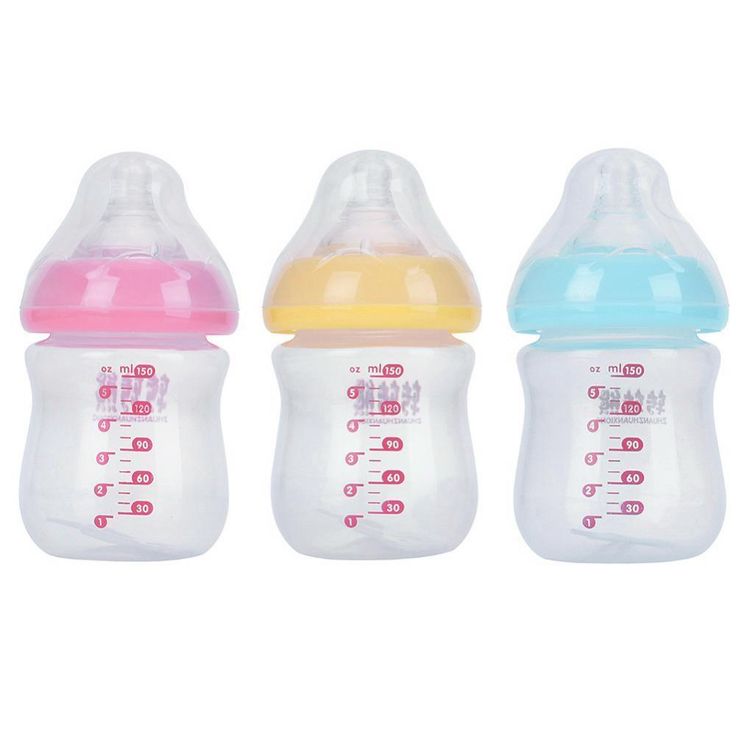 1KB
1KB - MIME type
- Image/png
resize PNG
width(px)
height(px)
License
Non-Commercial Use, DMCA Contact Us
- pink and brown floral feeding bottle illustration, Baby Bottle Diaper Baby shower, Girls Accessories s, baby Announcement, flower, magenta png 650x975px 98.1KB
- Baby Bottle, Cartoon Unicorn, Cute Unicorn, Baby Unicorn, Pink, Water Bottle, Drinkware, Baby Products, Tableware, Cartoon, Unicorn, Baby Products png 1000x1000px 589.66KB
- feeding bottle, Baby bottle Milk Infant, Milk filled baby bottle, blue, child, baby Clothes png 1000x1000px 145.
 75KB
75KB - clear drinking glass graphic, Drinking water Glass Coffee Cup, glass of juice, glass, coffee, plastic Bottle png 600x522px 248.14KB
- blue feeding bottle illustration, Infant Baby Bottle Emoji Sticker, milk bottle, united States Dollar, water Bottles, water Bottle png 530x526px 87.32KB
- Bib, female child, miscellaneous, child, child png 878x1500px 154.46KB
- Water Bottles Thermoses Mug Stainless steel, 40 oz, lid, steel, thermal Insulation png 481x1000px 300.19KB
- Diaper Infant Baby shower Baby Bottles, baby shower, child, people, boy png 781x1024px 317.
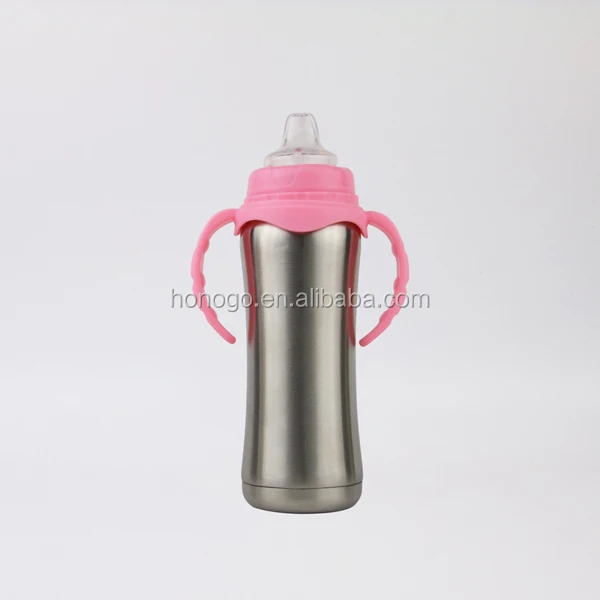 81KB
81KB - Baby bottles Infant Diaper, bottle, child, boy, baby Announcement png 564x846px 155.58KB
- clear glass screenshot, Water Glass Cup Pour, mineral water, glass, blue, splash png 4862x10100px 18.3MB
- Infant Cartoon Baby bottles, child, baby holding feeding bottle illustration, baby Announcement, mammal, child png 884x1024px 475.67KB
- Bottle glass jar Transparency and translucency, Glass jar, empty clear glass jar, glass, lid, bottle png 1780x2000px 1.11MB
- Water Bottles Thermoses Stainless steel Vacuum Laboratory Flasks, mug, lid, steel, material png 700x700px 187.
 44KB
44KB - Baby Bottles Glass bottle NUK plastic bottle, glass, glass, wholesale, baby png 500x1117px 605.89KB
- Breast milk Baby Breastfeeding Bottles Infant nutrition, bottle, child, hand, toddler png 2560x1536px 1.98MB
- Pacifier milk Baby Bottles Infant, milk, digital Image, baby Bottle, infant png 1347x3145px 3.13MB
- Plastic bottle Envase Glass bottle, stalin, celebrities, glass, food png 800x600px 243.88KB
- baby feeding bottle illustration, Baby bottle, food, text, child png 943x1178px 41.88KB
- Glass bottle, water bottle, glass beer bottle, plastic Bottle, food Storage png 500x539px 95.28KB
- Glass bottle Water Bottles, Water Bottle Mockup, glass, beer Bottle, beer png 500x1372px 299.18KB
- Baby Bottle, Cartoon Unicorn, Cute Unicorn, Baby Unicorn, Watercolor, Paint, Wet Ink, Water Bottle, Baby Products, Drinkware, Cartoon, Unicorn, Baby Products png 1000x1000px 688.19KB
- pink feeding bottle illustration, Cartoon Glass bottle Infant, Baby bottles material, glass, baby Announcement Card, baby png 1667x1667px 50.88KB
- Plastic bottle Glass bottle Baby Bottles Water Bottles, feeding bottle, glass, food, child png 550x550px 255.
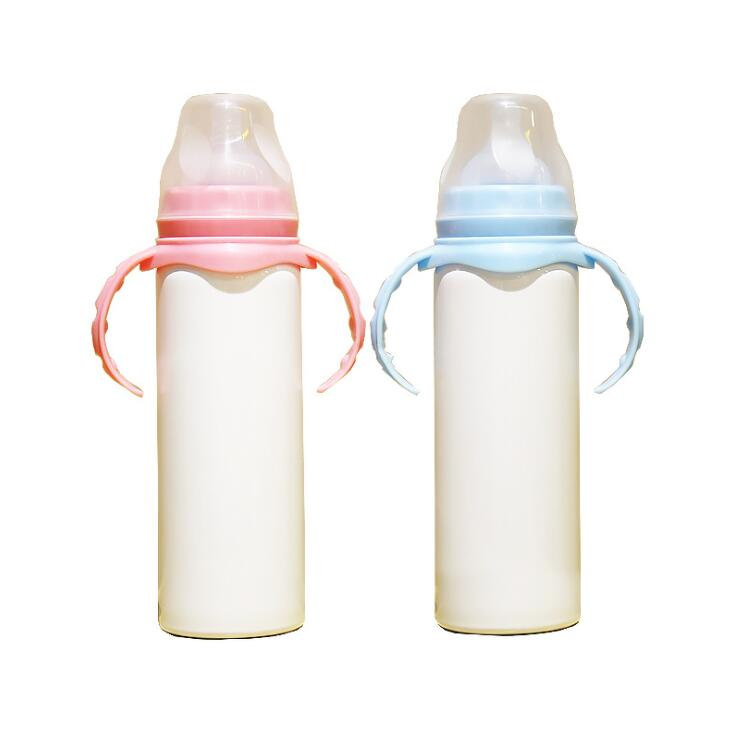 15KB
15KB - Plastic bottle Polyethylene terephthalate Water Bottles, bottle, glass, recycling, waste png 453x1126px 342.94KB
- clear glass bottle, Glass jar, Beer glass bottle, plastic Bottle, transparency And Transparency png 1200x1759px 1.33MB
- Water Bottles Bottled water, bottle, glass Beer Bottle, plastic Bottle, drinking Water png 656x1000px 612.37KB
- three blue clear bottle bottles, Bottled water Jar Mineral water Water Bottles, Mineral water, glass, plastic Bottle, liter png 661x554px 326.37KB
- Jar Vial Water bottle, jar, glass, lid, jar png 439x678px 81.
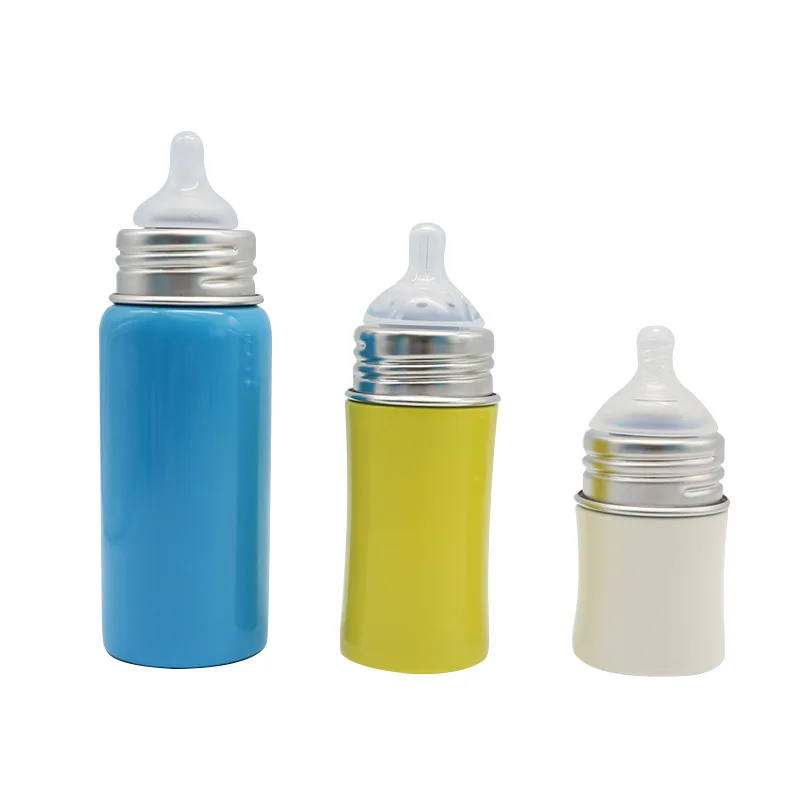 02KB
02KB - Plastic bottles Waste recycling, Recycled plastic bottles, clear plastic disposable bottles illustration, blue, recycling, shoe png 1250x1191px 1.1MB
- Beer bottle Drawing Coloring book Glass, bottle, glass, child, wine png 1000x1000px 19.41KB
- Breast milk Baby Bottles Pacifier, Hand-painted bottle material, watercolor Painting, child, infant png 532x500px 79.1KB
- Baby bottle Infant, Cartoon Baby Bottle, purple, baby Products, girl png 2685x6953px 124.47KB
- Eau de toilette by Shalimar Perfume Guerlain Note, exquisite perfume bottle, miscellaneous, cosmetics, perfume png 600x826px 506.
 62KB
62KB - Baby Bottle, Baby Bottles, Infant, Water Bottles, Pink, Magenta, Drinkware, Baby Bottles, Bottle, Drinkware png 966x1500px 140.04KB
- Beer bottle Glass bottle Water Bottles Drawing, bottle, watercolor Painting, glass, wine png 1000x1000px 16.3KB
- Water Bottles Glass Plastic Hip flask, Water bottle mockup, lid, steel, drinking png 700x700px 158.99KB
- Aluminum Plastic Metal Milliliter Avante Brindes, squeezed, miscellaneous, plastic Bottle, metal png 640x640px 286.58KB
- Water Bottles Canteen Cans Sport, bottle, steel, material, sports Association png 500x500px 69.
 37KB
37KB - Aguardiente Liqueur Anisette Whiskey Distilled beverage, wine, distilled Beverage, wine, beer png 600x560px 329.89KB
- Thermos water Bottles Stainless steel Thermal insulation, thermos, lid, steel, material png 1250x1500px 420.01KB
- GuessUp: Guess the Emoji Baby Bottles Baby milk, Emoji, child, pacifier, mobile Phones png 624x632px 339.74KB
- empty clear blue plastic bottle, Plastic bottle Polyethylene terephthalate Water bottle, plastic bottle, glass, pet, recycling png 1700x2375px 1.94MB
- empty glass bottle, Pixiv Bottle Anime, bottle, glass, blue, chibi png 658x877px 471.
 55KB
55KB - Baby Bottles Boss, baby, miscellaneous, boy, child png 848x1500px 153.29KB
- Mug Coffee cup Dishwasher Water Bottles, mug, lid, coffee, dishwasher png 1155x1155px 571.29KB
- Water Bottles Canteen Stainless steel Metal, bottle, glass, plastic Bottle, steel png 440x440px 101.06KB
- Milk bottle Milk bottle Cartoon, milk, glass, animation, milk png 600x1186px 177.89KB
- Water Bottles Fizzy Drinks Stainless steel, thermoses, glass, plastic Bottle, steel png 1500x1500px 1.14MB
- Water Bottles Water Bottles Lactation, bottle, white, infant, food Storage png 869x1400px 287.83KB
- Baby Bottle Drawing, baby, watercolor Painting, child, people png 1200x834px 1.01MB
Scientists: bottled baby milk contains millions of microplastic particles
Sign up for our Newsletter “Context”: it will help you understand the events.
Image copyright, Getty Images
Photo caption,Plastic bottles are much more popular than glass bottles
Bottle-fed babies consume millions of microplastics a day in their milk, scientists from Ireland found.
At the same time, the authors of the study published in the journal Nature Food do not call for abandoning the use of heated plastic containers, emphasizing that science does not yet know anything specific about the dangers of microplastic particles for humans.
- WHO finds no evidence that microplastics are harmful to health
- Plastic in bottled water: WHO launches investigation
Trinity College Dublin scientists were surprised by the sheer number of plastic microparticles that are released during high-temperature sterilization of popular polypropylene baby bottles .
"Last year, a World Health Organization (WHO) study estimated that the average person consumes between 300 and 600 microplastics per day. Our average figures are much higher: a million or several million," one of the authors told the Guardian research, professor of chemistry John Boland.
"We were just dumbfounded," the scientist added.
Microplastics are generally considered to be pieces less than five millimeters in length. Most of them are smaller than the thickness of a human hair.
Image copyright, Getty Images
Photo caption,Professor Boland says it is possible to reduce microplastics in milk
For the experiment, the researchers washed 10 new polypropylene bottles three times and then sterilized them according to WHO recommendations for five minutes in water at a temperature of 95 degrees Celsius.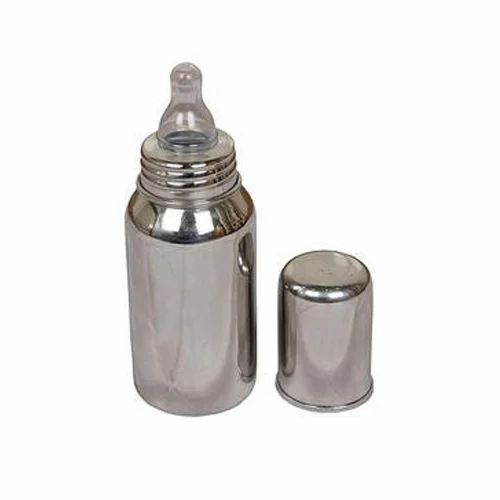 After drying the bottles in the air, the scientists then shook them with a mixture of boiled water cooled to 70 degrees Celsius.
After drying the bottles in the air, the scientists then shook them with a mixture of boiled water cooled to 70 degrees Celsius.
When Boland and his team examined the liquid from the bottles under a microscope, they found that it contained an average of 4 million microplastics per liter.
Scientists then compared this figure with the average amount of milk consumed by infants from polypropylene bottles in 48 countries. It turned out that for one baby there are about one and a half million microparticles of plastic per day.
Boland's team then tested liquid from bottles that were heated to lower temperatures and concluded that heating, like shaking the bottle, released more microplastic particles.
- How plastic has become a victim of its own success
Polypropylene is one of the most popular types of plastic for tableware and food containers in the world. According to the authors of the study, 82% of all infant formula bottles are made from it.




